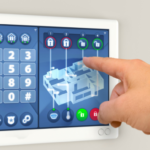COVID cases are rising exponentially across different parts of the world. Every industry is experiencing unprecedented uncertainty about recovery. The education industry is the worst hit amongst others. As per a study done by UNICEF, more than 1.5 billion students are out of schools and colleges. Children’s education has come to a halt as schools, colleges, and universities are shut all around the world. The new admissions are at an all-time low as people are hesitant about sending their children to schools. Thankfully, the online learning domain has come to the rescue of students by offering virtual classes.
Many middle and upper-class families have already started considering different teaching alternatives for their children. Homeschooling and learning pods are the two main choices that parents are interested in. In COVID-free pods or learning pods, small groups of students are joined by a tutor through a telepresence medium who teaches the subjects virtually. Studying in such a secure and safe environment is beneficial for a student’s future. This is the reason there is an increase in demand for such small study groups and virtual learning pods.
Learning in a virtual environment is new for everyone. Students, children, and parents, all are struggling to cope with the current situation. There are a lot of ways by which online learning can be made effective for virtual learning pods. Let us have a look at some of these tips and tricks.
Course content
With time, the attention span of people has become shorter. Teaching students in small groups has certain disadvantages. The entire group can get distracted if the course content isn’t engaging or informative. So, if you are planning to teach students in virtual learning pods, ensure that you get to know them beforehand. Based on their knowledge and expectations, you can design the course which is relevant for each student. While teaching concepts focus on one concept at a time, don’t rush through the entire chapter. Spare enough time for discussions at the end to clear doubts, if any.
Course completion expectations
Before you start the online learning session, define rules and agreements for the entire course. You can use online platforms like Google Jamboard or Mural to create the rules. Before starting every class, review the expectations so that you can drive healthy discussions in the sessions. Give complete freedom to students to voice their questions or doubts to increase the trust quotient. Celebrate small milestone completions, so that the students feel motivated throughout the course.
Collaborative projects
It is easy to create study groups among students who know each other or are friends. Thus, there are high chances that students in virtual learning pods would know each other very well. They would be aware of each other’s strengths and weaknesses. So, giving collaborative projects as assignments will get them excited and motivated. While working together, students can help one other in improving their weaknesses and using their strengths for project completion. This will maximize the learning experience for students studying in small groups.
Practical approach to teaching
Teaching in an online set-up is difficult as most of the time, you won’t have the supporting tools handy. Thus, you should use all the digital tools to showcase practical examples to explain concepts. Videos make the classroom sessions lively and keep students focused and engaged. Use relevant video content from websites like YouTube, Flocabulary, etc. You can also introduce tough concepts with the help of online games. There are many such apps on Android and iOS platforms that are free to install and use. Also, share some extra reading material with the students so that they can learn more in their free time.
Bring humor while teaching
In online learning sessions, you aren’t physically interacting with students. Thus, it becomes difficult to gauge their response and address concerns. Adding a humor element in the class will change the mood and bring about positivity. This reduces stress, and the students start concentrating on the concepts being taught. Therefore, try using memes, cartoons, or jokes to lighten up the mood in the class.
Teaching methodologies are becoming bold and creative to adapt to the current pandemic situation. Everyone is willing to try new things that can potentially benefit the students. Try incorporating the above-mentioned tips to maximize learning in small groups and virtual learning pods.
Related Posts












